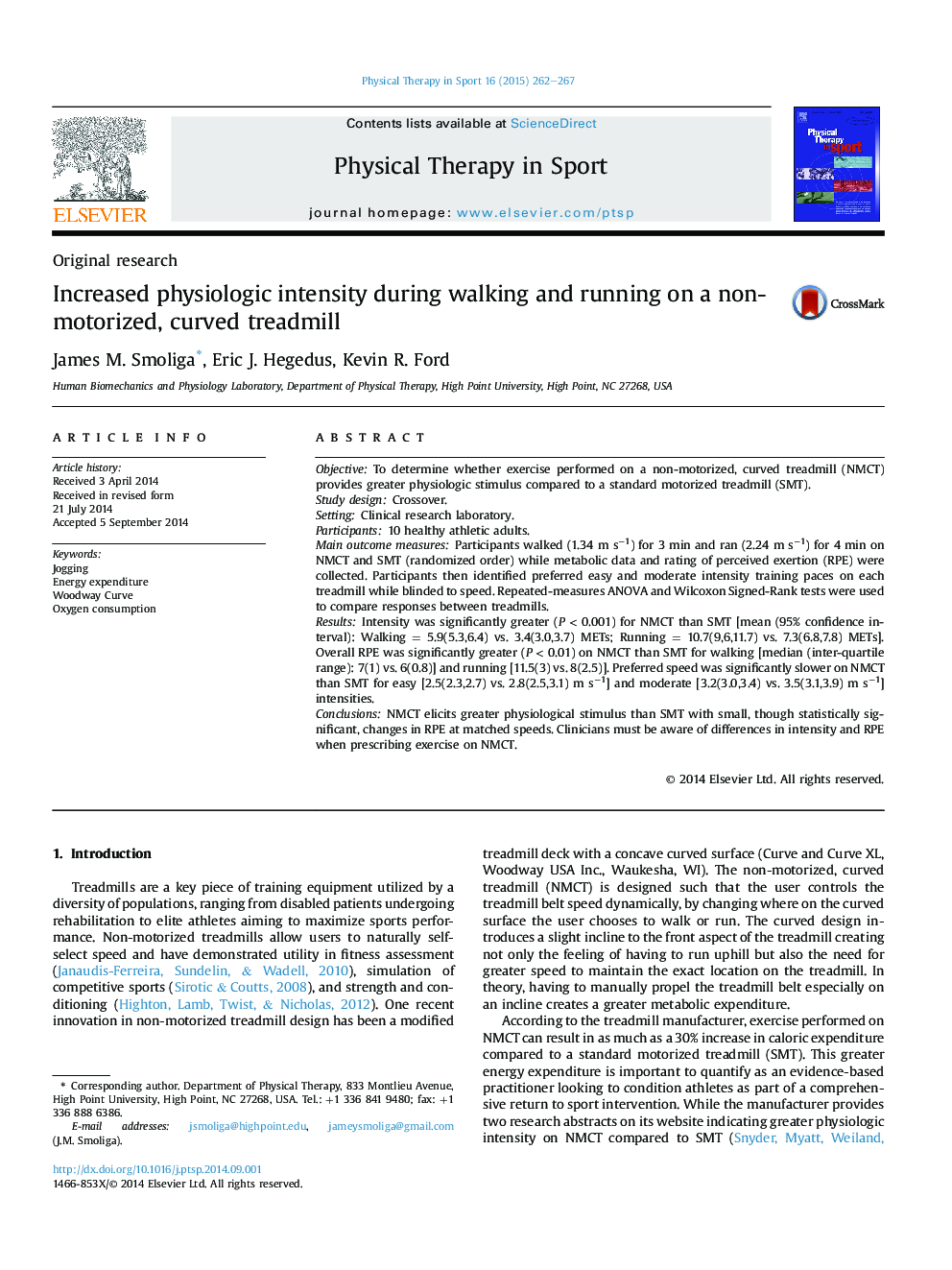| Article ID | Journal | Published Year | Pages | File Type |
|---|---|---|---|---|
| 2713770 | Physical Therapy in Sport | 2015 | 6 Pages |
•Walking/running on non-motorized curved and standard motorized treadmill was compared.•Metabolic intensity was significantly greater on non-motorized curved treadmill.•Non-motorized curved treadmill elicited greater rating of perceived exertion.•Preferred running speed was significantly slower on non-motorized curved treadmill.•Clinicians must be aware of physiologic changes on non-motorized curved treadmills.
ObjectiveTo determine whether exercise performed on a non-motorized, curved treadmill (NMCT) provides greater physiologic stimulus compared to a standard motorized treadmill (SMT).Study designCrossover.SettingClinical research laboratory.Participants10 healthy athletic adults.Main outcome measuresParticipants walked (1.34 m s−1) for 3 min and ran (2.24 m s−1) for 4 min on NMCT and SMT (randomized order) while metabolic data and rating of perceived exertion (RPE) were collected. Participants then identified preferred easy and moderate intensity training paces on each treadmill while blinded to speed. Repeated-measures ANOVA and Wilcoxon Signed-Rank tests were used to compare responses between treadmills.ResultsIntensity was significantly greater (P < 0.001) for NMCT than SMT [mean (95% confidence interval): Walking = 5.9(5.3,6.4) vs. 3.4(3.0,3.7) METs; Running = 10.7(9,6,11.7) vs. 7.3(6.8,7.8) METs]. Overall RPE was significantly greater (P < 0.01) on NMCT than SMT for walking [median (inter-quartile range): 7(1) vs. 6(0.8)] and running [11.5(3) vs. 8(2.5)]. Preferred speed was significantly slower on NMCT than SMT for easy [2.5(2.3,2.7) vs. 2.8(2.5,3.1) m s−1] and moderate [3.2(3.0,3.4) vs. 3.5(3.1,3.9) m s−1] intensities.ConclusionsNMCT elicits greater physiological stimulus than SMT with small, though statistically significant, changes in RPE at matched speeds. Clinicians must be aware of differences in intensity and RPE when prescribing exercise on NMCT.
